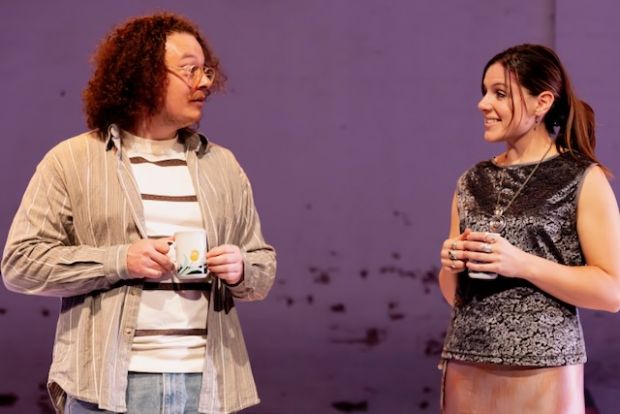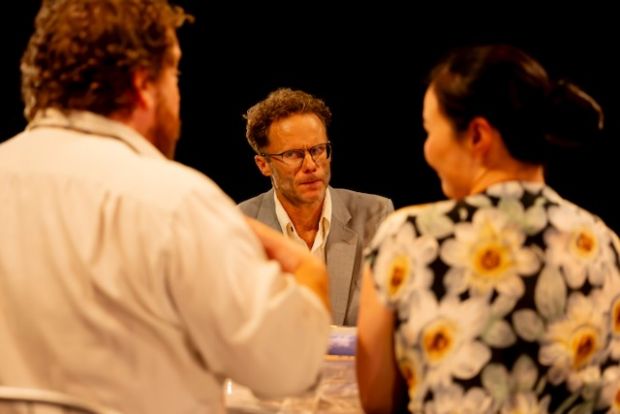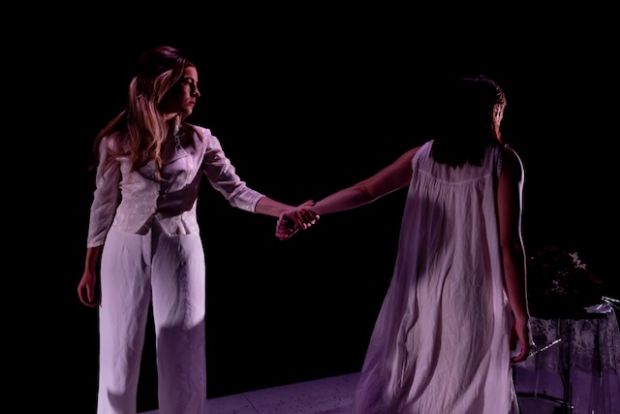Anatomy of a Suicide
Alice Birch’s script requires split second timing of the dialogue, staging multiple scenes at once, a plethora of characters doubling and managing constant moving between time periods. The script reads more like an avantgarde film script specifically designed to test the editor’s skill. The Director, Katie Smith, accepted the challenge to tell this/these stories of the intergenerational impacts of mental illness.

The timeline, which gradually emerges, involves the lives of Carol (1970s), her daughter, Anna (1990s) and Anna’s daughter, Bonnie (sort of now). The attempts of these main characters to deal with their depression, manic episodes, self-harming, drug addiction and suicide are exposed. The devastating effects of their illness on the people who love them or are socially or professionally involved with them are also highlighted. The company of Elisa Armstrong, Ashleigh Coleman, Adriano Del Re, Adam Hetherington, Harper Hynes, Frances Lee, Lucy Payne, Erin Perrey, Alexander Tomisich and Stephen Whiley energetically delivered endless raw emotion usually at breakneck speed. It was hard to keep up and impossible to process. In contrast, the silences which are woven into the script felt like being torched with anguish.

The play was set on a single, long, narrow, light coloured platform. Actors entered from both ends and brought the characters to life in this constrained space. There were some realistic physical elements on the stage, a table, glasses, a clothesline, chairs, a hospital bed and many bunches of flowers. These created quite a few problems for the actors trying to move around them and each other and getting them on and off the narrow stage. There were occasions when all the angst and emotion which had built up in the previous scene fell away as they dealt with props. The costume changes were better managed with actors efficiently helping each other in full view of the audience.

The shape of the stage and competing dialogue made it difficult to hear the scene furthest away, especially, when there were more tender, quieter scenes at the same time as ones involving loud and robust voices. The sound design (Grace Ferguson), set and costume design (Olivia Lucia Pimpenella) and lighting design (Georgie Wolfe) all provided a solid and unintrusive backdrop. The costume design was particularly helpful for the audience to keep some track of the timeline.
This play is recognised as a challenge to stage, and it is also difficult for audience members to watch. The compassion and commitment displayed by the company towards the characters they are embodying made it compelling. It can only be hoped that through this play the suffering of those with a mental illness will be more strongly considered, if only by the audience.
Ruth Richter
Photographer: Angel Leggas.
Subscribe to our E-Newsletter, buy our latest print edition or find a Performing Arts book at Book Nook.
